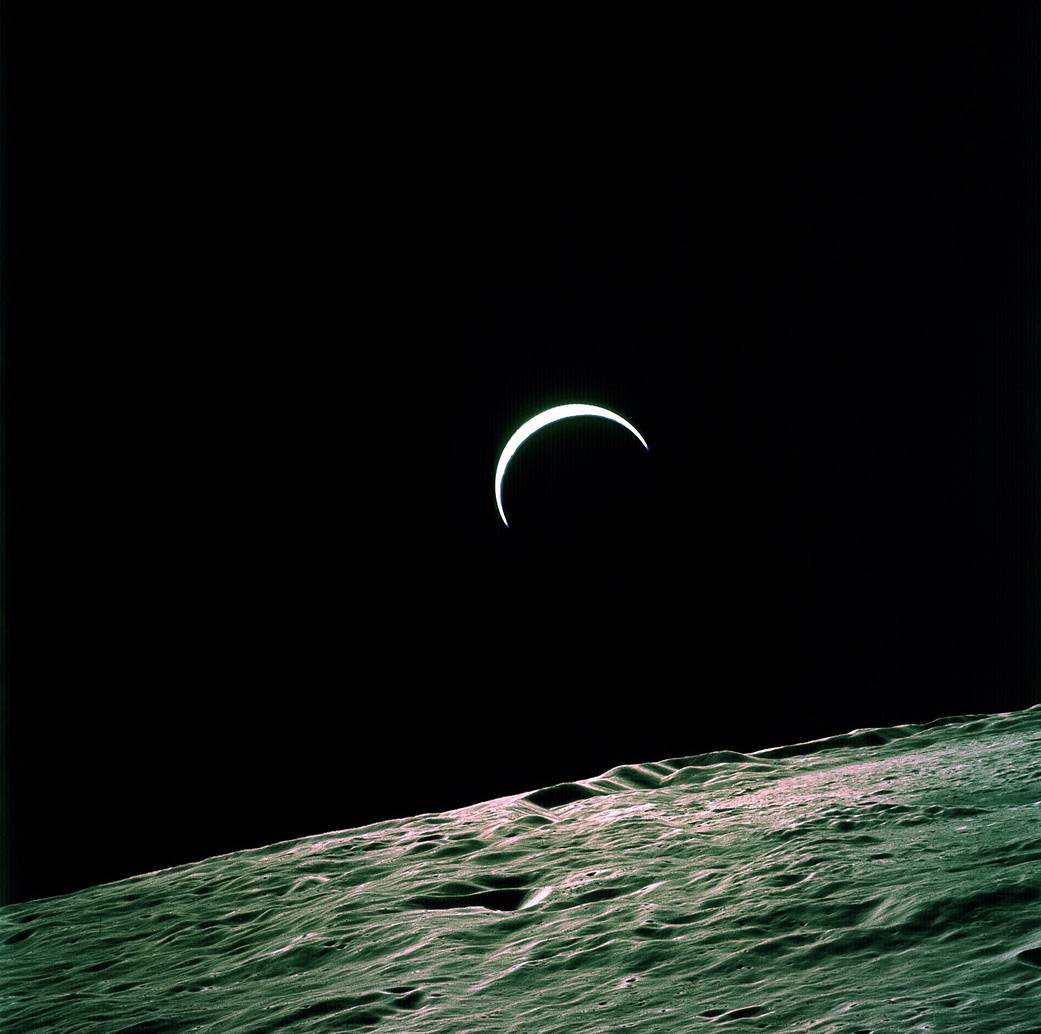
This view of the crescent Earth over the Moon’s horizon was taken during the Apollo 15 lunar landing mission. Apollo 15 launched from the Kennedy Space Center on July 26, 1971 via a Saturn V launch vehicle. Aboard was a crew of three astronauts: David R. Scott, mission commander; James B. Irwin, lunar module pilot; and Alfred M. Worden, command module pilot.
Designed to explore the Moon over longer periods, greater ranges, and with more instruments for the collection of scientific data than before, Apollo 15 included the introduction of a $40 million lunar roving vehicle (LRV) that reached a top speed of 16 kph (10 mph) across the Moon’s surface.
The successful Apollo 15 lunar landing mission was the first in a series of three advanced missions planned for the Apollo program. The primary scientific objectives were to observe the lunar surface, survey and sample material and surface features in a preselected area of the Hadley-Apennine region, setup and activate surface experiments, and conduct in-flight experiments and photographic tasks from lunar orbit. Apollo 15 televised the first lunar liftoff and recorded a walk in deep space by Worden. Both the Saturn V rocket and the LRV were developed at the Marshall Space Flight Center.
Image credit: NASA

























